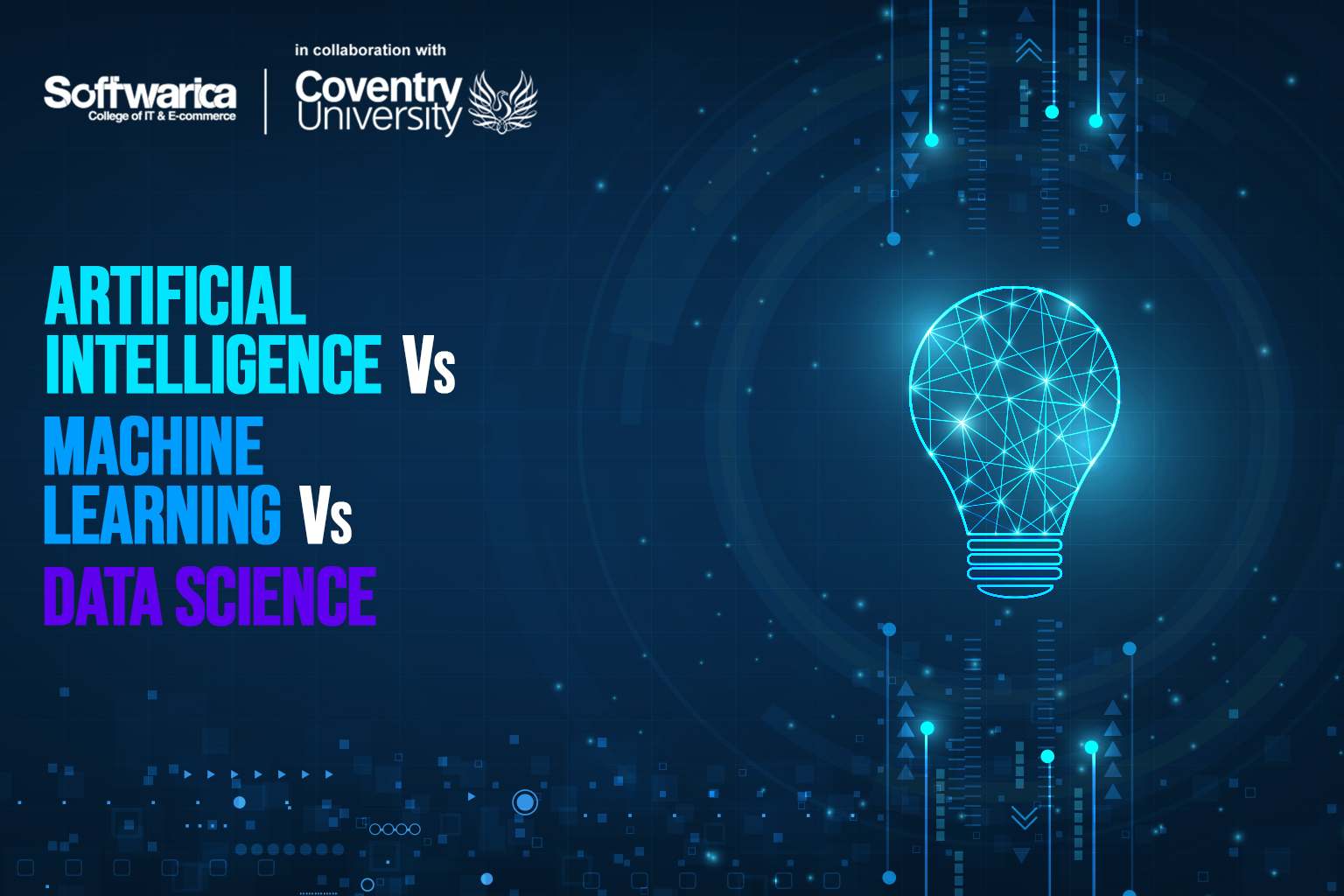
Top Careers Path after Master in Data Science in Nepal
As the economy is increasingly shifting toward data-driven solutions, Data Science has now become a hot topic among IT specialists. Directly connected to data analysis, the knowledge and skills learned during Master in Data Science in Nepal is incredibly valuable for the job market today. It will be fair to say say “Behind every big successful company, there is a data scientist”.
A career in data science is impressively exciting, forward-looking, and rewarding but which career path should you follow after getting your Master in Data Science in Nepal? Well, in this blog, we will discuss the importance of data science and provide you with the top career options after your Master in Data Science in Nepal.
What is MSc Data Science?
The current computerized world demands professionals with data processing capability, analytical ability, and fast computing efficiency, and Master in Data Science in Nepal is perfectly designed to produce such enthusiastic. The masters in Data Science program is a 2-year interdisciplinary degree program that provides students with the combined knowledge of of Mathematics, Statistics, Information Technology and Computer Science.
A Master in Data Science in Nepal graduate can use scientific methods, and systems to extract insights from data in various forms, both structured and unstructured – it’s similar to data mining. Master in Data Science degree programs address the growing need for data scientists with the fine knowledge and skills to provide insight into organizational issues.
Future in Data Science
Data Science is a buzzword in the IT world right now, and due to the evolving technology and increasing amount of data, the need for Data Scientists in Nepal is high in demand.
Companies across the world, in a wide spectrum of industries, have embraced data science as the best way to gather and leverage smarter business intelligence. Organizations that don’t keep up are unlikely to compete in the future. As dynamic and lucrative opportunities are continued to open, this is the right time to choose a career in data science.
Data Science encompasses a range of breakthrough tech concepts including Artificial Intelligence (AI), the Internet of Things, and Deep Learning. With technological developments, the impact of data science has drastically increased.
Top 4 Careers Opportunities after Master in Data Science in Nepal
In the modern world, every type of job involves working with data and almost every organization and business owner needs a skilled data scientist to filter the issues, interpret data, and find solutions.
For the past few years, data scientist has been listed as the “Best Job in America” by Glassdoor. Forbes has also listed data science jobs as the top job for work-life balance. According to the U.S. Bureau of Labor Statistics report, by 2026, the demand for data scientists will drive a 27.9 percent rise in employment in the United States.
Data science is a broad field and offers a variety of career opportunities. It’s quite normal to get confused or not be sure what each career option is about or which one is more suitable for you. Below are listed the top 4 career paths you can choose after your Master in Data Science in Nepal and become a successful data scientist.
- Business Intelligence (BI) Developer
Business intelligence (BI) is a set of technologies and strategies to transform business information into actionable reports and visualizations, and a Business intelligence developer is someone who is in charge of developing and maintaining BI interfaces. A BI developer uses data analytics to find valuable business information and share it with organizations and business owners to make the perfect decision.
BI developers often act as technology specialists and are responsible for repairing or restoring computer programs used for intelligence. They are also expected to build visualizations to help business owners understand customer behavior so that they can make the best decision possible for business growth.
One needs a deep experience in software engineering, databases, and data analysis to develop BI interfaces, and Business intelligence developers are perfect at doing this job. A data scientist with a software development background and BI experience can lead the interface development process. Extreme BI developers use BI tools or develop custom BI analytic applications to understand business requirements, create actionable data models, and produce data representation solutions.
Business Intelligence Developers are basically responsible for:
- Collecting, organizing and interpreting data.
- Reviewing the quality and accuracy of the data.
- Providing useful insights, patterns, and solutions.
- Designing and testing new data collection methods and strategies.
- Building custom data analytic applications using BI tools.
- Leading BI software development, deployment, and maintenance.
The annual average salary of a BI developer is $94,021, according to Glassdoor.
- Machine Learning (ML) Engineer
Machine Learning (ML) Engineers are proficient programmers who research, build and develop self-running software to automate predictive models. They build Artificial Intelligence (AI) systems to leverage huge data sets and generate algorithms capable of learning and improving existing artificial intelligence systems.
ML engineers typically write code and create data funnels for Machine learning applications. They work directly with data scientists to develop models for building AI systems that can analyze vast amounts of data and make predictions. Besides designing and building machine learning systems, machine learning engineers also run tests and experiments to maintain the performance and functionality of the systems.
Job responsibilities for Machine Learning Engineers may differ but they often include:
- Design and create self-running machine learning systems.
- Implement machine learning algorithms.
- Run AI systems experiments and tests.
- Work with data scientists and help them become more efficient.
- Write code and make sure the code is easy to scale, maintain and debug.
The average annual salary of an ML engineer is $107,426, according to Glassdoor.
- Business Analyst
As business owners seek to increase efficiency and reduce costs to make their businesses more profitable, the demand for business analytics has skyrocketed. Business analysts serve as the liaison between IT and business and technology – they use data analytics to determine requirements and deliver recommendations and reports to the end-users.
Business analysts typically use business data to form business insights, identify issues and recommend changes that have to be made in businesses and other organizations to increase their business growth. They often take on a leadership position and work closely with others throughout the business hierarchy and find necessary technical information for the business.
BAs identify business areas that need improvements to increase efficiency and strengthen business processes. The major responsibilities of Business analysts include:
- Identifying business opportunities and technical needs and requirements of the organization.
- Producing business documents and setting out information in great detail.
- Using SQL and Excel to analyze large data sets.
- Compiling charts, tables, and other elements of data visualization
- Finding problems and issues and recommending their solutions to the organization.
- Evaluating business processes.
- Data analysis, including pricing, budget forecasts, and plans.
- Report management.
- Effective presentation of data to the business.
The average annual salary of a Business analyst is $94,924, according to Glassdoor.
- Statistician
Statisticians are known to play a vital role in research and academia for decades. They apply statistical methods to collect, analyze and interpret quantitative data and recommend the necessary changes that need to be made in an organization. Statisticians are valuable employees in almost every industry – they often work in areas such as business, government, health and medicine, physical sciences, and environmental sciences.
A good statistician focuses on survey development and data collection and ensuring the validity and usefulness of the data. Other tasks that a statistician has to perform include designing data collection processes, delivering the generated data to stakeholders, and advising organizational strategy.
Statisticians are typically mathematics and statistics experts who are responsible for applying statistical methods to solve real-world problems. In general, in the private sector, statisticians often work to interpret data to inform organizational and business strategies while in the public sector, they are often focused on furthering the public good.
Regardless of whether a statistician works for a public or private organization, these are the common tasks they have to perform:
- Designing processes for data collection.
- Collecting, analyzing, and interpreting data.
- Identifying trends and relationships in data.
- Recommending solutions to stakeholders.
- Advising organizational and business strategy.
- Assisting the organization in decision-making.
The average annual salary of a statistician ranges from $77k to 113k, according to Glassdoor.
Now that you know the career prospects and job opportunities you are likely to find after Master in Data Science in Nepal, you may wonder in which IT college in Nepal you should study Master in Data Science in Nepal. Well, you can begin your MSc Data Science journey at Softwarica College as we provide you with the best Master in Data Science in Nepal. Collaborated with Coventry University, an Master in Data Science degree from Softwarica College really helps students shape a successful career in data science.


.png)


